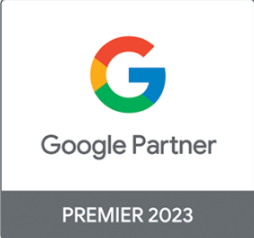By – Pete Jooste

How Performance Design Drives Visibility and Conversion
SEO isn’t just about keywords and content—it’s about people. It’s about how they interact with your site, how quickly they find what they need, and how long they stick around.
That’s where UX (User Experience) comes in. At Algorithm, we’ve seen time and again that when SEO and UX work together, the results go beyond rankings. They drive real performance.
UX & SEO: A Symbiotic Partnership
SEO and UX used to sit in different rooms. SEO was about technical tweaks and keyword targeting, while UX focused on design and usability. Now? They’re co-pilots.
Search engines are getting smarter. Google increasingly ranks sites based on how users behave once they land. Are they finding what they need quickly? Are they staying? Are they coming back?
A fast, easy-to-use website sends strong signals to search engines. Good UX leads to lower bounce rates, longer dwell time, and better engagement, nall of which impact how your site ranks. Essentially, creating a website that users find easy and pleasant to use also signals to search engines that your site is valuable and relevant.
At Algorithm, we connect SEO with performance design from day one. Because we know that what’s good for your users is good for your visibility. We work hand-in-hand with internal teams to identify UX friction points, optimise customer journeys, and co-create conversion-first content structures.
In this post we walk you through the top SEO & UX best practices to help your site serve your readers and search engines what they are looking for, when they are looking for it..
Speed and Mobile UX
Nobody likes waiting for a page to load, and if your site isn’t mobile-friendly, you’re losing traffic before you’ve even made your pitch.
From an SEO perspective, Google considers page speed as a ranking factor. Similarly, with a huge portion of searches happening on mobile devices, mobile-friendliness is essential. But they’re also user experience factors. If your site feels slow or broken on a phone, people won’t hang around around. Google also uses a “Mobile-first Index,” which means the mobile version of your site is the primary one used for indexing and ranking, penalizing sites that are not mobile-friendly.
That’s why we focus on frictionless experiences across devices. Mobile isn’t a nice-to-have. It’s the default. Every second counts, both for your users and your rankings.
Designing for Searcher Intent
Not every search means the same thing. Someone typing “best CRM software” is in a very different mindset than someone searching “what is a CRM.”
Understanding that difference is core to any good SEO strategy, but it’s also key for UX.
Understanding the intent behind a search query (e.g., informational, commercial, navigational) allows you to create content that directly addresses what users are looking for. Aligning content strategy with searcher intent is a sure-fire way to improve content marketing ROI by meeting users where they are in their journey. For example, creating content that anticipates commercial investigation intent, like comparison guides or reviews, can help capture market share and move potential customers through the sales funnel.
Our Market Share Analysis digs deep into what your audience is really looking for, not just the terms they’re using. This insight powers both the content we create and the way we design it. Also, our RACE Intent Framework ensures UX decisions align with where your users are in their journey—maximising commercial relevance at every touchpoint
Internal Linking: Where UX Meets SEO’s Secret Weapon
Internal links do more than pass ranking power, they guide users.
When done right, they help people navigate your site easily, find related information, and understand how everything connects. That keeps them on your site longer and improves overall engagement.
For SEO, internal links help search engines discover content on your website and understand its structure. The number and quality of internal links pointing to a page signal its importance to search engines, influencing its ranking. Strategic internal linking, using relevant anchor text and ensuring links are crawlable, is key to improving a site’s overall SEO performance and user flow. It’s about making exploring your site feel natural.
At Algorithm, we don’t treat internal links as a technical afterthought, they’re a user journey tool. Want to know how, don’t forget to reach out and we can set up a call to unpack this!
Readability = Results
People don’t read web pages the way they read books. They scan, skim, and bounce if it feels like work.
Clear, easy-to-read content keeps users on the page. It builds trust. It drives actions.
And yes, it helps with SEO. Google’s algorithm (including Rank Brain) uses engagement signals to decide if your content is worth showing. If people leave after a few seconds, your rankings will reflect that.
We build content with readability in mind, backed by data on what your audience responds to. It’s not just about being clear, it’s about being useful.
The SEO And UX Navigation
Your navigation is your site’s backbone. If users can’t find what they need quickly, they won’t stay. And if search engines can’t crawl your structure properly, they won’t rank you.
A well-structured navigation helps users easily find the information they need, leading to a positive experience. From an SEO standpoint, a logical site architecture, often achieved through clear navigation, helps search engine crawlers understand the hierarchy and relationships between pages on your site. This makes it easier for them to index your content and distribute link equity effectively. Poor navigation, such as excessively nested menus or a confusing URL structure, can hinder both user flow and search engine crawling.
That is why when we map a client site, we build the navigation to serve the user intent and serve business priorities. This way we are making sure that both human users and search engines get what they need right away.
The Common UX Mistakes That Undermine SEO
You don’t need a broken site to have bad UX – In fact, the mistakes we see most often are subtle but serious.
Here are the main culprits we see again and again:
Slow load times
Even a few extra seconds of loading can cause users to abandon your site. It’s not just frustrating, it signals to search engines that your content might not be worth the wait. Site speed affects everything from bounce rate to conversion rate, and it’s a known ranking factor for Google. Fast sites win, period.
Overcomplicated navigation (especially on mobile)
If users can’t figure out how to get where they need to go, especially on a small screen, they’re gone. Deep menu structures, unclear labels, or hidden links might seem like small design choices, but they create unnecessary friction. Clear, intuitive nav is critical for both usability and crawlability.
Pop-ups that interrupt rather than assist
Pop-ups can be useful, when timed right and offering real value. But if they appear too soon, block key content, or are hard to close (especially on mobile), they break the flow. Google has even penalised intrusive interstitials, so these can directly hurt rankings.
Tiny fonts and poor readability
Fonts that require zooming or straining to read instantly degrade the user experience. If your audience can’t easily absorb your content, they won’t stick around. This impacts dwell time and increases bounce rate, two metrics closely tied to SEO performance.
Content hidden behind tabs or sliders
When key information is buried in collapsible tabs, accordions, or sliders, it’s harder for users to find, and for search engines to index. Important content should be easy to access and clearly visible. If users have to dig for answers, many simply won’t.
These issues frustrate users. And when users leave, rankings drop. Fixing them isn’t just a design task; it’s a performance move.
The SEO effect of these is severe. These issues can lead to high bounce rates and low dwell time, signalling to search engines that your site is not providing a good experience, which is why you should continuously review these hidden UX factors as part of your SEO programme.
UX is SEO’s Secret Weapon
You just can’t game search engines anymore. The best way to rank is to build a site that people genuinely want to use. That’s why UX and SEO are no longer separate disciplines, they’re two sides of the same strategy. A strategy we follow religiously to ensure we deliver the best to our clients.
At Algorithm, we connect the dots, combining technical SEO, user behaviour insights, and content design into a single performance system. We don’t chase rankings. We build digital experiences that deserve them.
Want to see how UX can boost your SEO results and drive real business performance?
Let’s talk.

By – Pete Jooste



